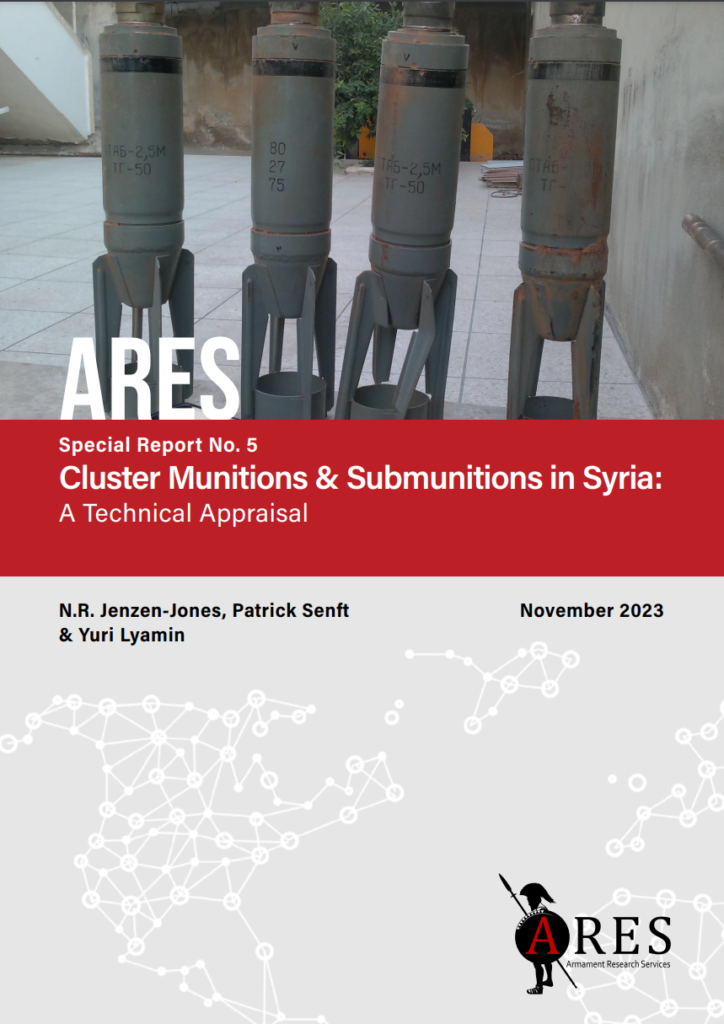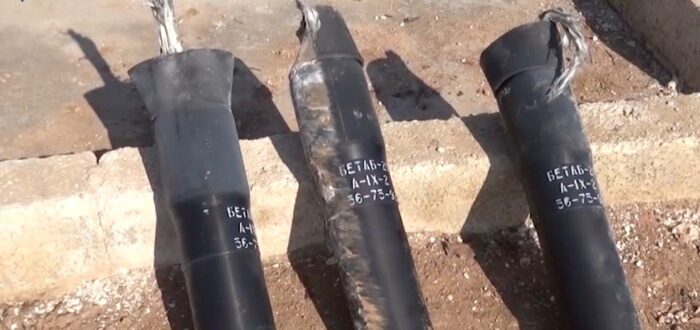Armament Research Services (ARES) is pleased to announce the release of Special Report No. 5, Cluster Munitions & Submunitions in Syria: A Technical Appraisal. Special Report 5 is the culmination of nearly a decade of ARES research into the use of cluster munitions and submunitions in the Syrian Civil War, covering a wide range of material from the first documented use of these munitions in July 2012 to the present day.
The report aims to document every known model of cluster munition and submunition used in the conflict, providing descriptions, technical specifications, first use cases, and technical diagrams wherever possible. In total, ARES has documented 19 distinct submunitions and 24 distinct cluster munitions, the vast majority of which are of Soviet or Russian design. These include more modern models such as the 3B30 submunition, which has most recently been documented in Ukraine. Examples from China and Egypt are also assessed. Special Report 5 provides the first comprehensive look at this wide range of munitions in the Syrian context.
Besides conventional submunitions, Special Report 5 also documents the use of area-denial submunitions—also referred to as scatterable mines—that have been employed in Syria until today. With unexploded submunitions continuing to pose a serious humanitarian danger in past and current conflict zones around the world, Special Report 5 also highlights the circumstances that lead certain submunitions to experience exceedingly high dud rates. In this report, ARES emphasises the impact of improper usage, decayed explosive charges, and soft soil on the reliability of submunitions.
In addendums and appendices, the report offers additional information on the submunitions used in Syria and their function. One addendum documents the practice of repurposing submunitions, where these unexploded ordnance items have been repurposed into hand grenades, IEDs, or other improvised munitions. A second addendum includes a differential identification of common incendiary submunitions and white phosphorous munitions.
By compiling and publishing this new report, Armament Research Services hopes to document the scale of cluster munition use in Syria and foster a better technological understanding of this type of munition.

To read the full publication, click here. For more publications from ARES, see our Publications page.
Remember, all arms and munitions are dangerous. Treat all firearms as if they are loaded, and all munitions as if they are live, until you have personally confirmed otherwise. If you do not have specialist knowledge, never assume that arms or munitions are safe to handle until they have been inspected by a subject matter specialist. You should not approach, handle, move, operate, or modify arms and munitions unless explicitly trained to do so. If you encounter any unexploded ordnance (UXO) or explosive remnants of war (ERW), always remember the ‘ARMS’ acronym:
AVOID the area
RECORD all relevant information
MARK the area from a safe distance to warn others
SEEK assistance from the relevant authorities

